While the ocean remains largely unexplored, we occasionally get a glimpse of the weird and wonderful creatures that eke out a living in the deep (like the ever-popular blobfish). Here are some that are totally out-of-this-world.
Fangtooth
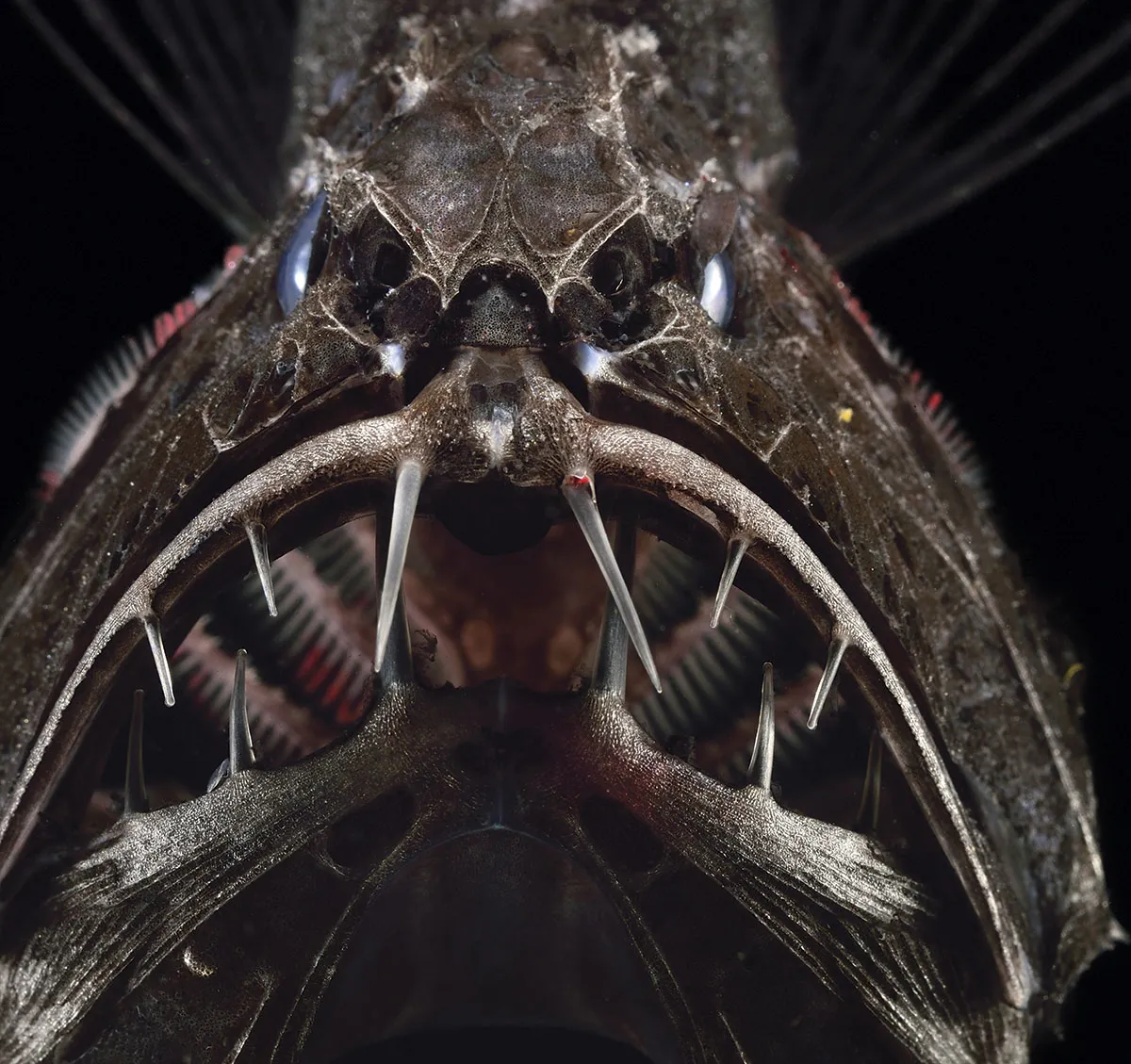
Two hundred metres is all that separates you from an alien world, right here on Earth. Descend that far into the ocean, and you enter the ‘twilight zone’ of the deep sea, where the Sun’s rays gradually fade away and animals play a deadly game of hide-and-seek with predators in the shadows.
Dive down beyond 1,000 metres and you’re in the ‘midnight zone’, a vast darkness punctuated by flashes of light from life forms that hunt for food and seek mates here. It’s a world with terrifying teeth, like those of the fangtooth fish. But don’t let the fangtooth scare you: it’s about the size of a grapefruit.
Zooplankton
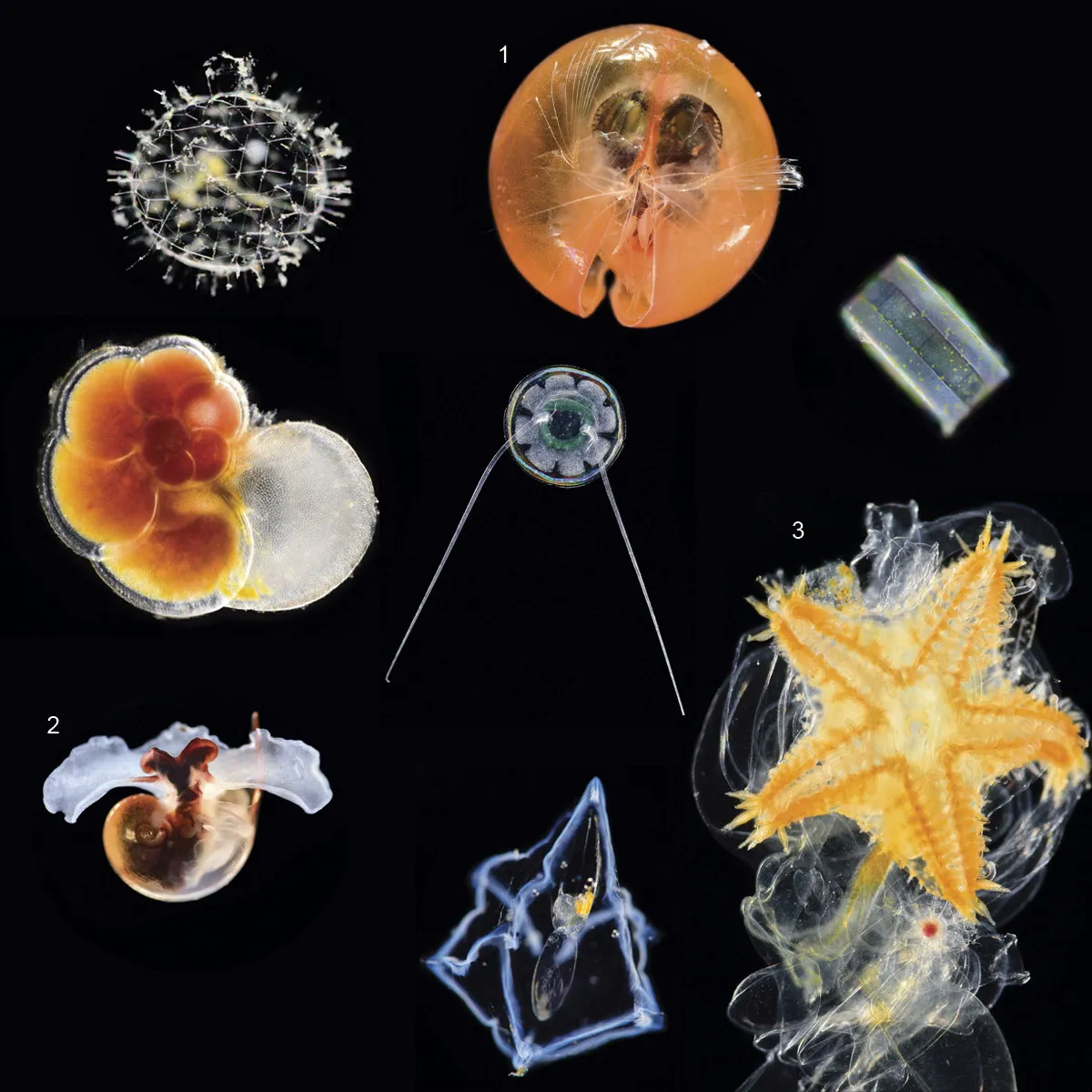
Lots of different animals drift in the ‘inner space’ of the deep ocean, where they are collectively known as zooplankton – from the Greek for ‘animal drifters’. Some of them live their whole lives as drifters, such as the ‘seed shrimp’ (1) tucked up in its orange carapace, and the ‘sea butterfly’ (2) – a snail that swims instead of crawls.
Others are only temporary members of the zooplankton – the larval stages of animals such as sea stars (3), which eventually sink back down to continue their lives on the seafloor. Spending time as drifters means they can be carried to new places by ocean currents, if they’re not eaten by other zooplankton on the way.
Leptocephalus larva

Ocean animals often have early stages in their life cycles that are very different from their adult form. This leaf-like leptocephalus larva will eventually develop into an adult eel, transforming the shape of its body.
Having a thin, see-through body as a larva may help it to survive the gauntlet of predators in the zooplankton as it grows. Because the larvae and adults look so different, larval forms were often described as different species from the adults, until marine biologists realised they were different stages of one life cycle.
Sea sapphire copepods
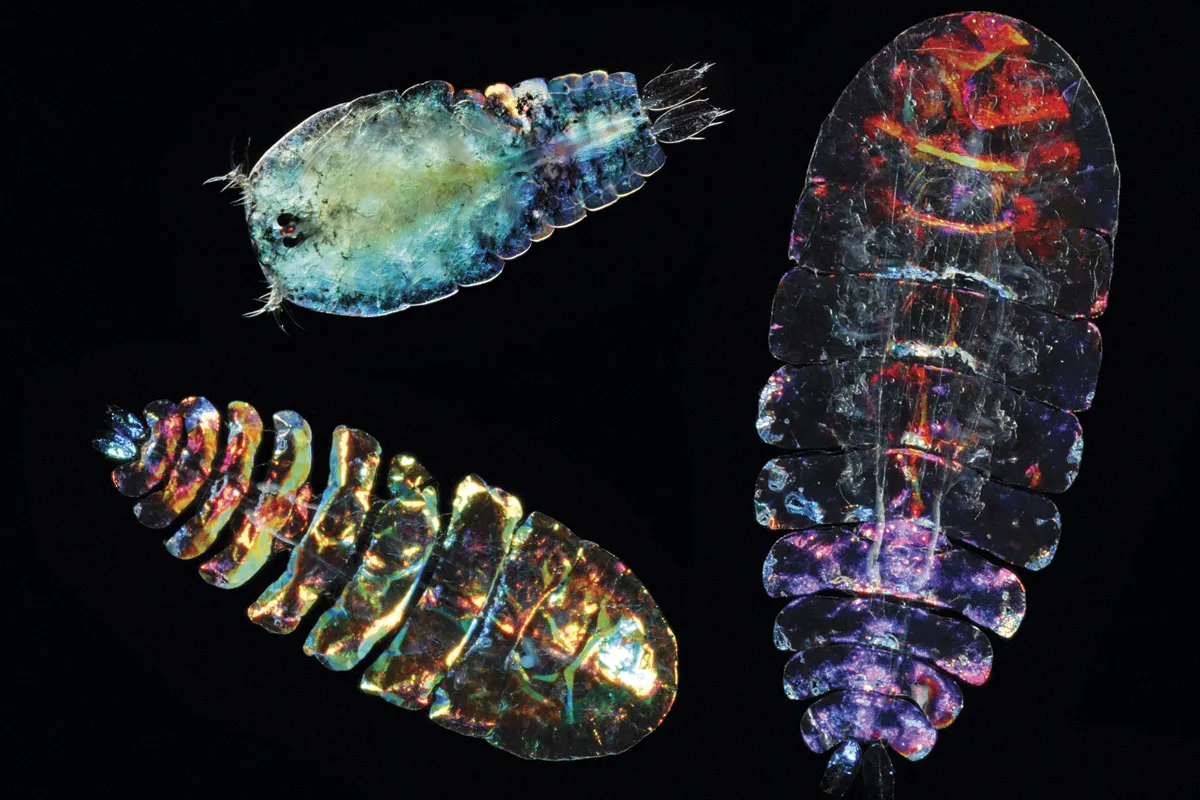
Copepods are tiny crustaceans, typically only a millimetre or two in size, and are often eaten by deep-sea fishes such as the thread-tail and the stoplight loosejaw. Most copepods graze on microscopic algae that thrive near the ocean surface, and their faeces and dead bodies help to carry carbon into the deep below.
But these ‘sea sapphire’ copepods are different: the females live as parasites inside drifting jelly animals called salps, while these colourful males swim free in the ocean. The males have tiny crystal plates in their skin that reflect blue light, giving them a glittering appearance.
Dragonfish & Hatchetfish
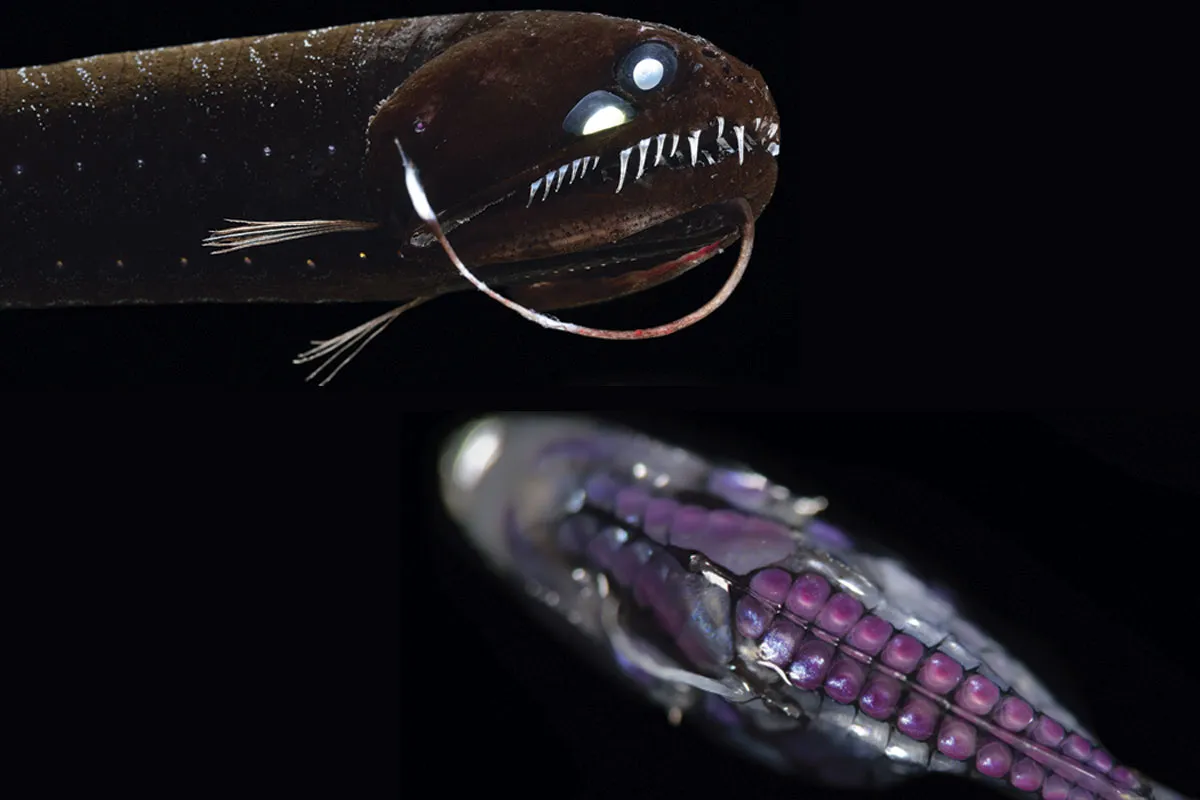
Like underwater fireflies, many deep-sea animals can produce spots or flashes of light, known as bioluminescence.
In the twilight zone, the remnants of sunlight cast shadows that reveal animals to predators, so lots of species in this zone are speckled with lights for camouflage. The underside of the hatchetfish, for example, has bioluminescent organs that match the faint light coming from above, breaking up its silhouette.
Down in the midnight zone, animals such as the dragonfish use bioluminescent searchlights to find their prey. And throughout the deep ocean, creatures signal with lights to other members of the same species, to attract a mate, for example.
Stoplight loosejaw
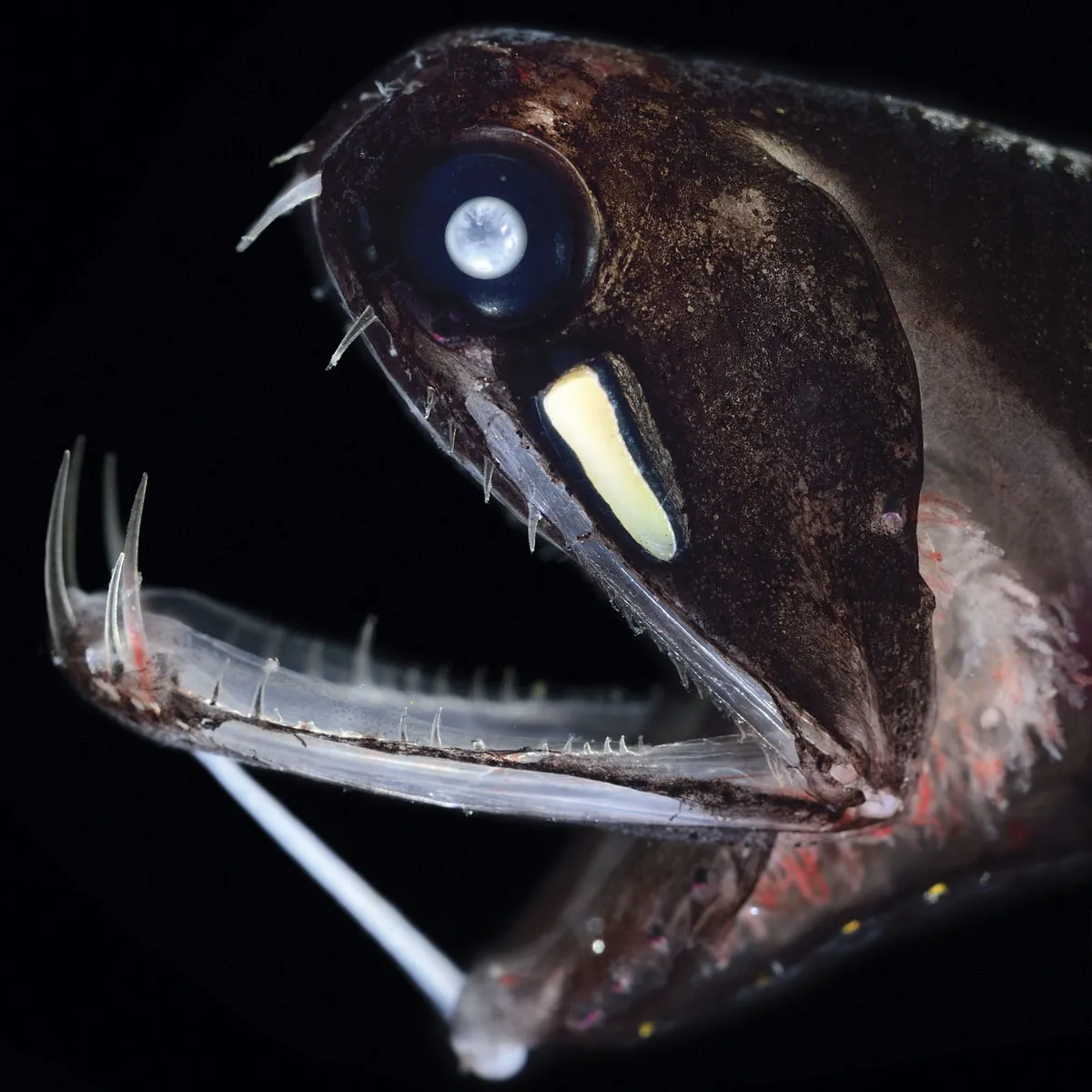
The stoplight loosejaw fish is one of the stealthiest predators in the deep. Its lower jaw is an open frame of bone with no fleshy floor across it, which means it can snap shut very quickly like a mousetrap. And it’s called ‘stoplight’ because the bioluminescent organs near its eyes produce red light.
Most bioluminescence in the deep ocean is blue, as that colour travels well through water, and the eyes of many deep-sea animals aren’t sensitive to red light. But the stoplight loosejaw can see red, so it can light up its prey without alerting them to the danger.
Glass squid
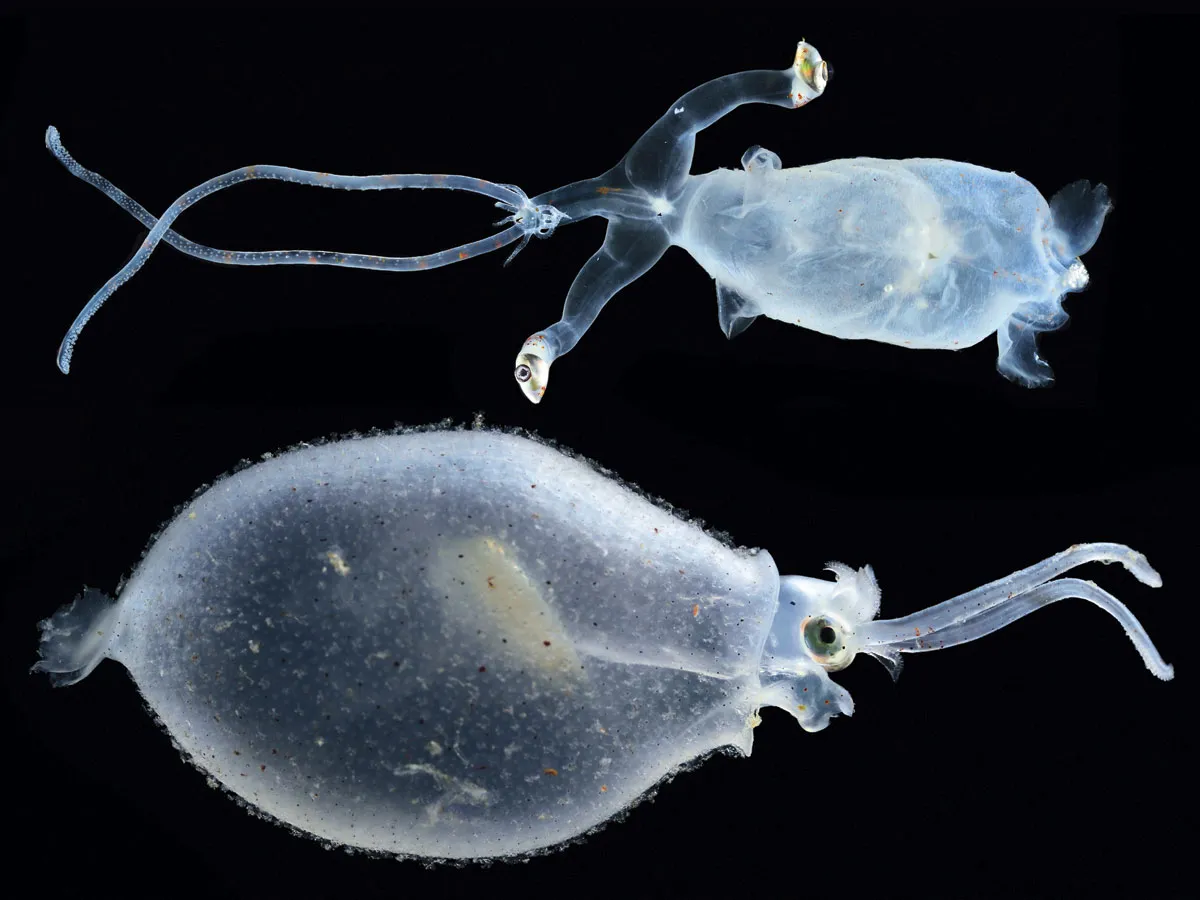
There are around 60 species of glass squid in the ocean, and they get their name from their transparent bodies – a neat trick to avoid casting a shadow that could be spotted by predators in the twilight zone.
The top image is the juvenile of a lyre cranch squid. The two appendages sticking out from it are eyes on long stalks. Those eyes are more opaque than the rest of its body, so each eye also has a bioluminescent organ to mask its shadow. But when this juvenile grows up, those stalks will disappear, and it will move down to live in the midnight zone as an adult.
Cock-eye squid
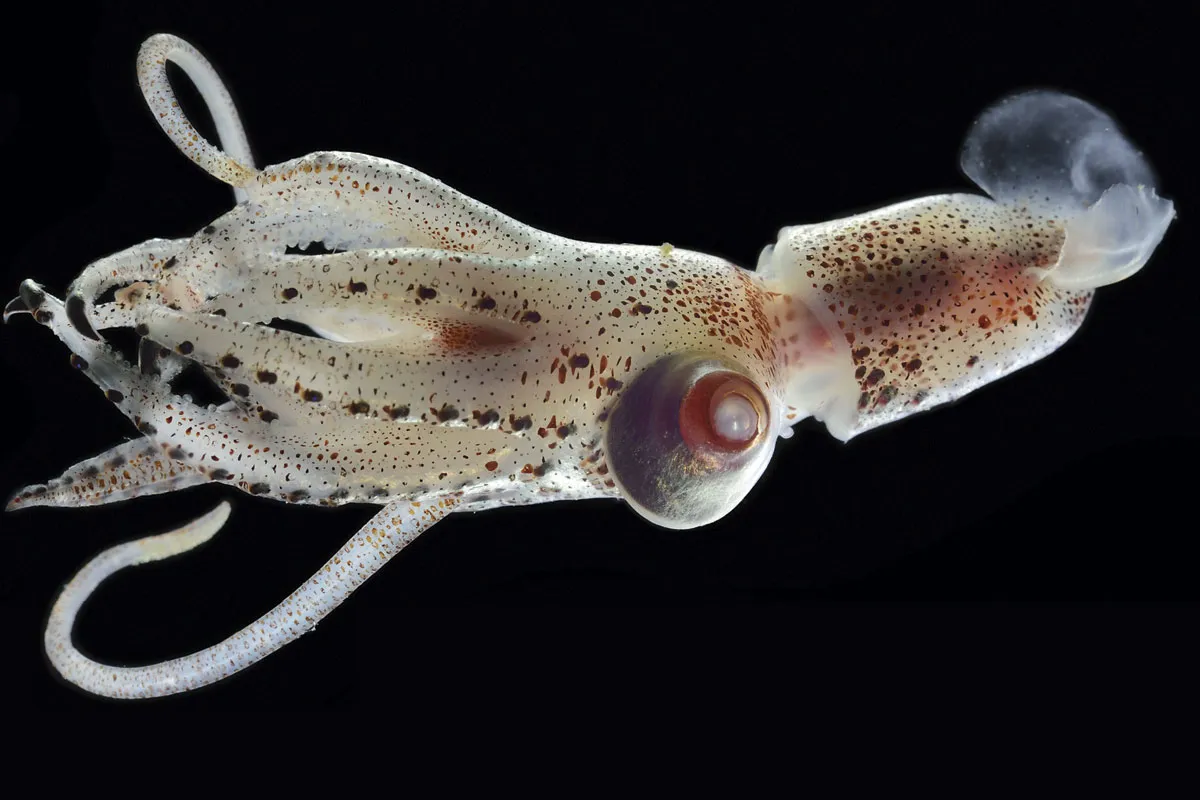
Squid in the deep ocean come in a range of sizes, from the Kraken-like giant squid that can stretch more than 10 metres to the tips of its longest tentacles, to tiddlers measuring about 15 centimetres long.
And deep-sea squid come in a variety of shapes too: the cock-eye squid, also known as the strawberry squid, has one eye twice the size of the other. It swims in the twilight zone with the large eye looking up for shadows cast by potential prey, and the smaller eye keeping a lookout for possible predators below.
Thread-tail fish & Boxer snipe eel
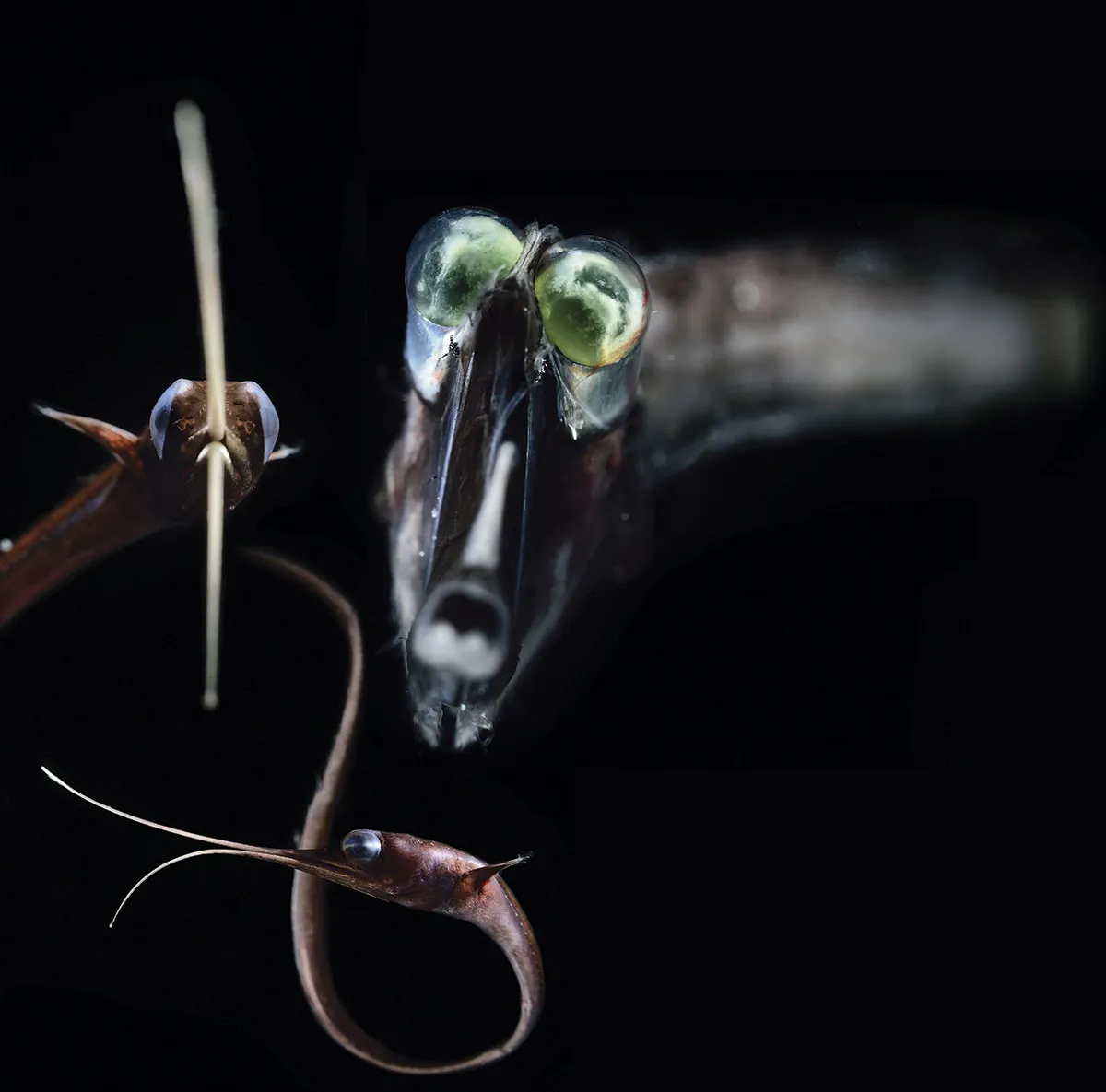
The thread-tail fish and the boxer snipe eel have long, thin, ribbon-like bodies. The thread-tail’s body is about 30 centimetres long, with streamers twice as long on its tail, which gives this fish its name. Its other name is the ‘tube-eye fish’ thanks to the binocular-like lenses of its eyes, which are used to spot the shadows of prey in the twilight zone. So unusual is the tube-eye fish, that it’s the only species in an entire taxonomic order.
The boxer snipe eel grows to nearly 1.5 metres long, and feeds by sweeping its long jaws through the water, snagging the appendages of passing crustaceans on its fine teeth.
Anglerfish
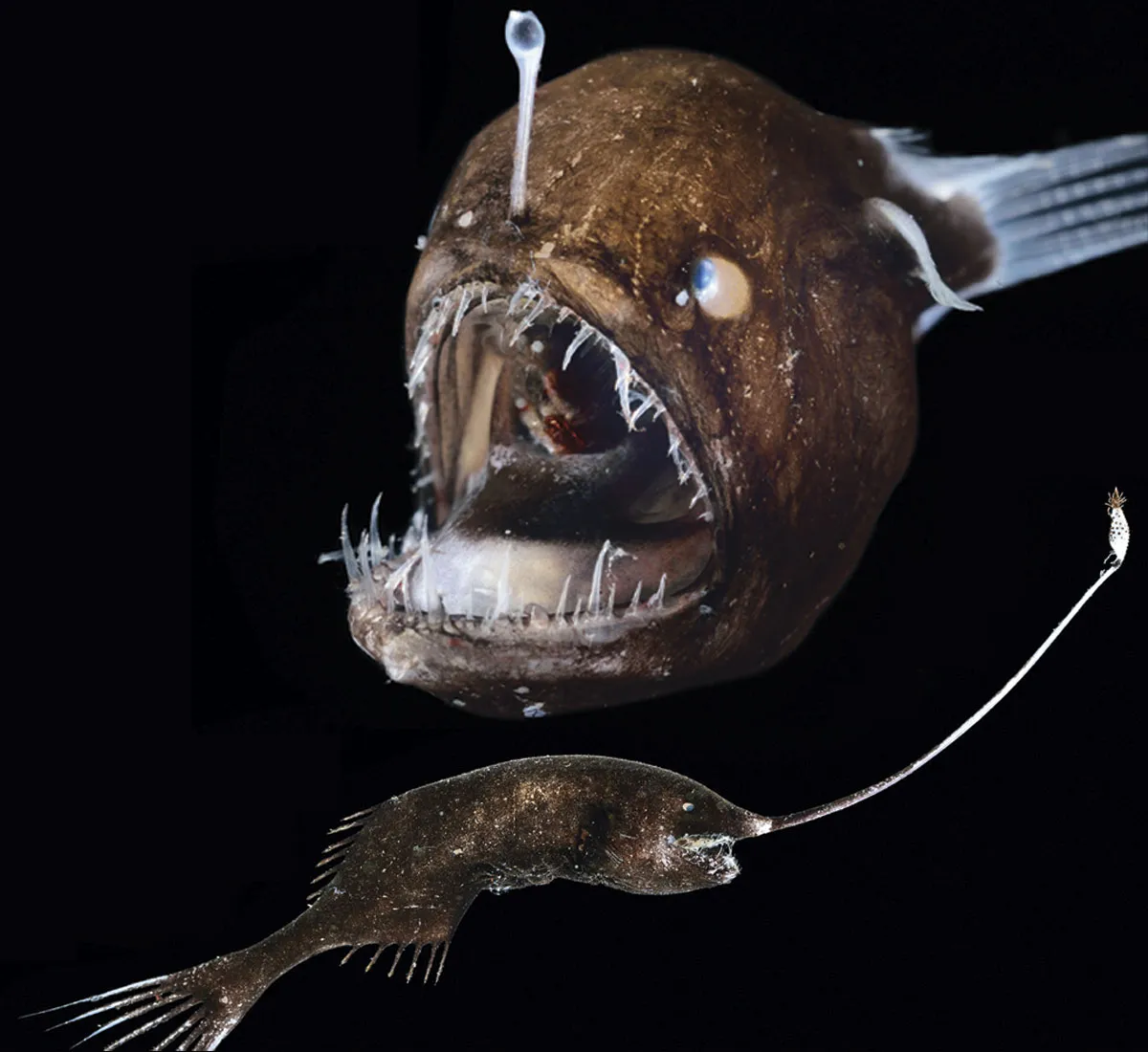
Life can be scarce in the dark depths, which is a problem when animals need to find a partner for mating. Hanging on to a potential mate is a good solution, and some deep-sea anglerfishes take that to extremes.
The males are much smaller than the females, and when boy meets girl, he gives her body a kiss that lasts the rest of his life. The male’s blood supply joins up with the female’s through his lips, and he lives off her like a parasite while she catches prey with her bioluminescent lure. But the dangling male is a handy accessory for the female to carry around, ready to fertilise her eggs when she releases them.
Read more about the deep sea:
